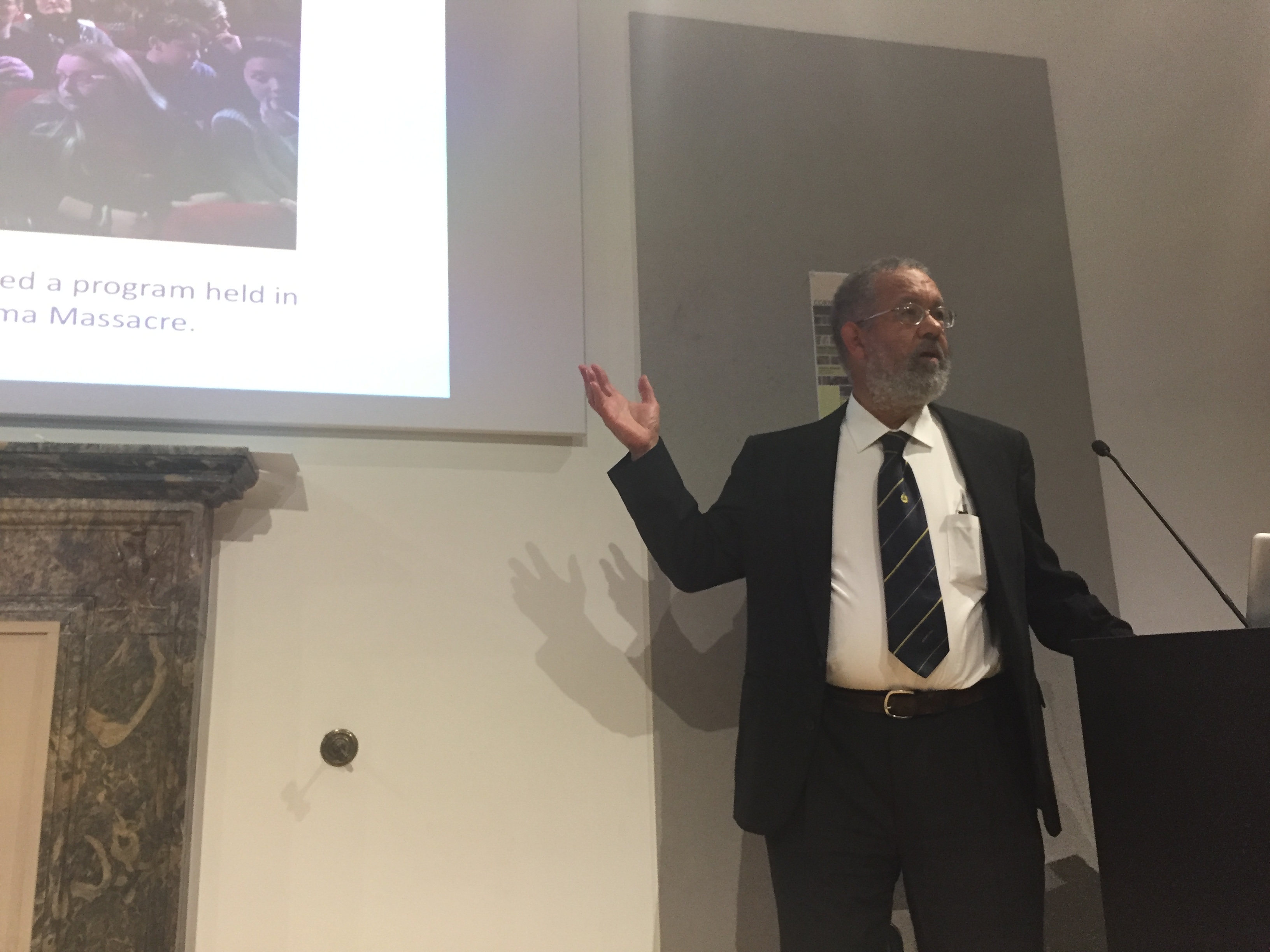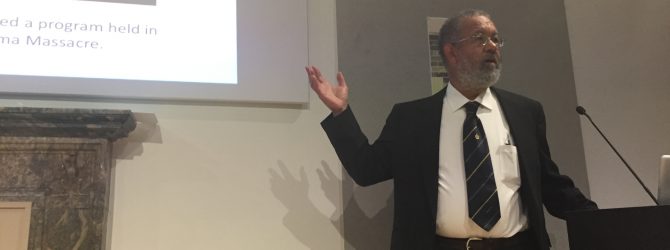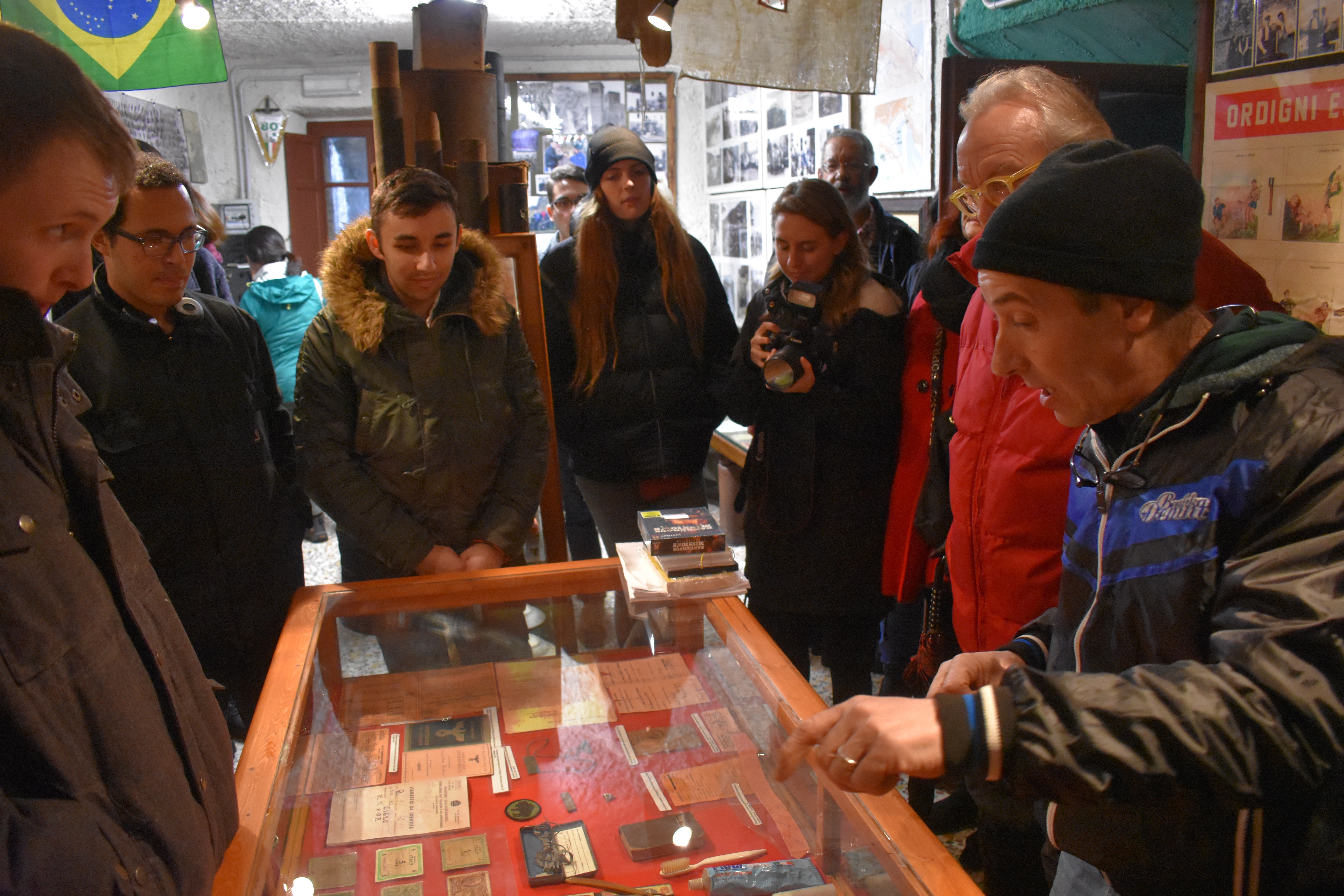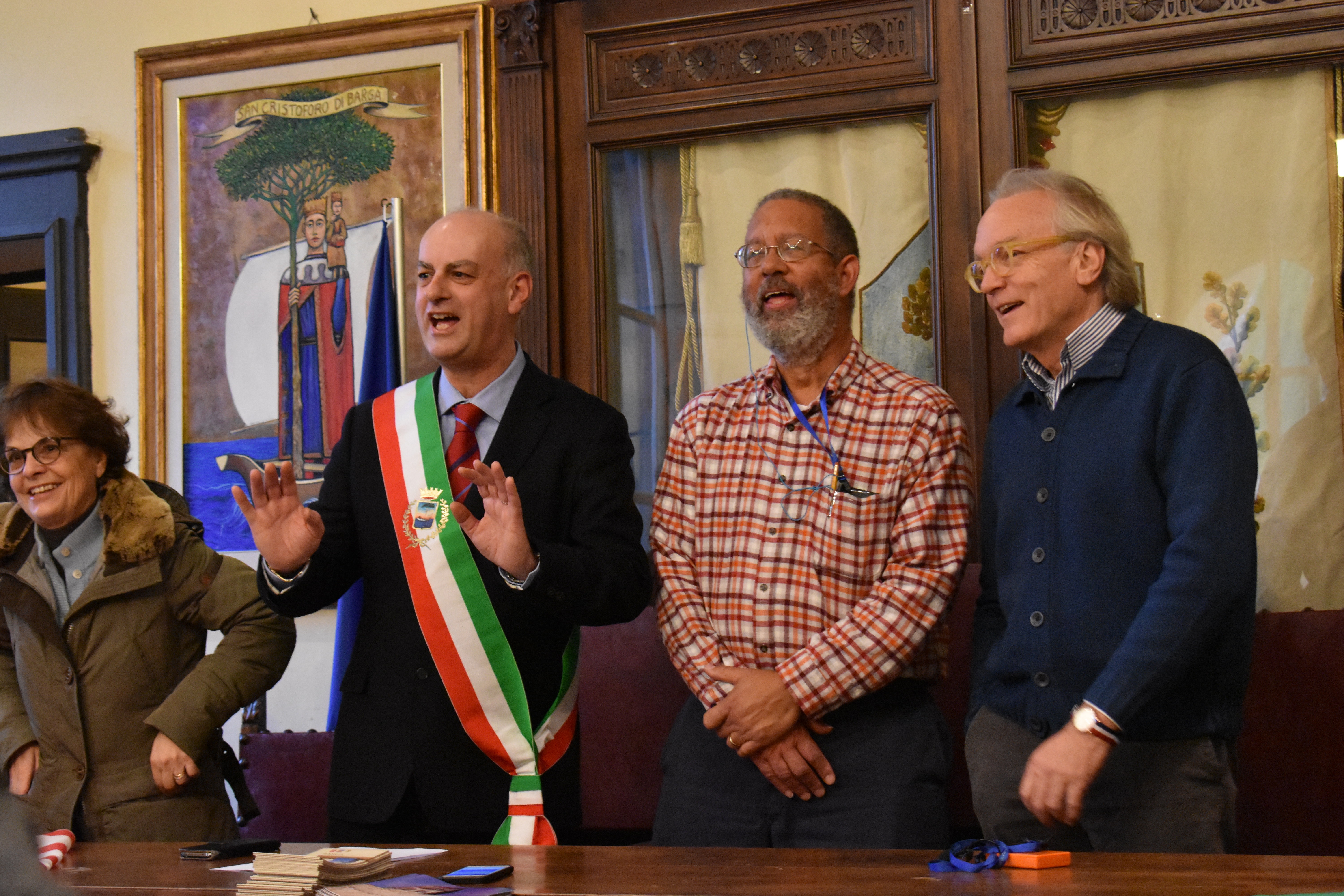In a lecture in Palazzo Santacroce on Thursday, Dr. James Pratt talked about the 366th Regiment, a ‘colored’ infantry unit in World War II that fought in the Italian campaign, and the historical preservation, or lack thereof, of this group by American and Italian historians.
 As I’ve mentioned in earlier blog posts, Dr. Pratt’s father, Captain Charles Pratt, was an officer in the 366th Regiment in the Second World War. This group, which fought in many of the towns we visited on our most recent field trip, was composed of mainly African American soldiers, although there were some other ethnicities, including Chinese, Sri Lankan and Italian soldiers.
As I’ve mentioned in earlier blog posts, Dr. Pratt’s father, Captain Charles Pratt, was an officer in the 366th Regiment in the Second World War. This group, which fought in many of the towns we visited on our most recent field trip, was composed of mainly African American soldiers, although there were some other ethnicities, including Chinese, Sri Lankan and Italian soldiers.
Unlike other ‘colored’ regiments that fought in the war, the regiment featured African American officers, one of whom was Dr. Pratt’s father. The 366th was also one of the most highly educated of any American unit in the war. Dr. Pratt’s father, for one, was a lawyer.
When Dr. Pratt and his wife, Professor Mildred Warner — my professor for CRP 4160 — were in Italy seven years ago, Dr. Pratt knew only vague details of his father’s time in Italy. When he began exploring where his father fought and began interacting with amateur historians in these small Italian towns, he was “infected” with learning about his father’s history.
As a retirement project, Dr. Pratt began researching the 366th, trying to understand more about the men who made up the regiment. In the lecture, Dr. Pratt described his conversations with the Pro Loco organizations of the Italian countryside. The Pro Locos, which translates directly to “for the place,” are made up of amateur historians who wish to provide a service to the community. For these volunteers, it’s not about developing tourism, it’s about “keeping history alive.”
He was impressed to see the motivation of these historian groups in learning more about the war and he was amazed by their dedication to preserving the history and sharing it with others. We saw this firsthand on our field trip to central Italy: incredibly well-informed Italians provided us with extensive details about the Italian campaign.
Dr. Pratt stressed how the history of the 366th is a shared history. The Italians live in the places where these battles occurred 70 years ago, and Dr. Pratt has engaged with dozens of individuals who either fought there or whose relatives fought there. While these groups may otherwise have no connection, these events tie them together.
In the years following the war, a member of the 366th Regiment became a U.S. senator while others became high-ranking Army generals and well-regard attorneys and prosecutors. Dr. Pratt’s father became a county judge of Kalamazoo County in Michigan. According Dr. Pratt, the success of the men in the post-war years is “the important story.”



